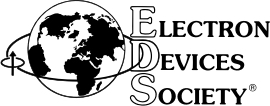Plagiarism Detection and Prevention: CrossCheck Overview Abstract
Publishing and authorship in the digital age is a dynamic, ever-changing proposition. With all the benefits these technological advancements offer, they create some new challenges as well. Chief among these is the ease with which original work can now be copied (either legitimately or otherwise).
In this webinar, we will examine plagiarism in the era of electronic publishing and demonstrate tools the IEEE provides volunteers to help them identify similarities that exist between recently submitted manuscripts and other previously published papers. One such tool is CrossCheck.
In this webinar, Bill Hagen, Senior Manager, IEEE Intellectual Property Rights (IPR), will present an overview of CrossCheck, what it is, and why we use it. He will explain how volunteers can access CrossCheck, either through a vendor system that has the tool integrated, or through the IEEE CrossCheck Portal, which is available to all publication volunteers. In addition, Hagen will provide a demo on how to use the CrossCheck Similarity Reports that are issued for all manuscripts submitted through the system, explain how to interpret the Similarity Report results and how to determine if CrossCheck detected a problem.
Background Info
IEEE began offering CrossCheck as an optional tool for publication volunteers to use in early 2009. As it became clear that CrossCheck could be a valuable quality check for content going into Xplore, the Publication Services and Products Board (PSPB) and Board of Directors approved policy in November 2012 that mandated the use of CrossCheck in all publications. Because most IEEE periodicals are handled through ScholarOne Manuscripts, CrossCheck was integrated in their submission system, and in February 2013 they began automatically uploading all manuscripts to CrossCheck at submission. This saved time and effort for the editors, who previously had to initiate the upload manually. In April 2013, the IPR Office launched the CrossCheck Portal. This allowed all publication volunteers to access CrossCheck and helped connect staff support to volunteers’ use of the tool/service.







